Butterscotch pudding is the kind of dessert that wraps you in a cozy hug with every spoonful. If you’ve been craving something creamy, rich, and irresistibly nostalgic, you’re in the right place. This isn’t just another pudding—it’s a flavor-packed treat that feels like home and tastes like a dream.
In this guide, you’ll learn exactly how to make butterscotch pudding that’s smooth, silky, and bursting with that deep caramelized sweetness you love. Whether you’re a total beginner or just want to perfect your go-to recipe, I’ve got the tips, tricks, and steps to help you absolutely nail it.
What is Butterscotch Pudding?
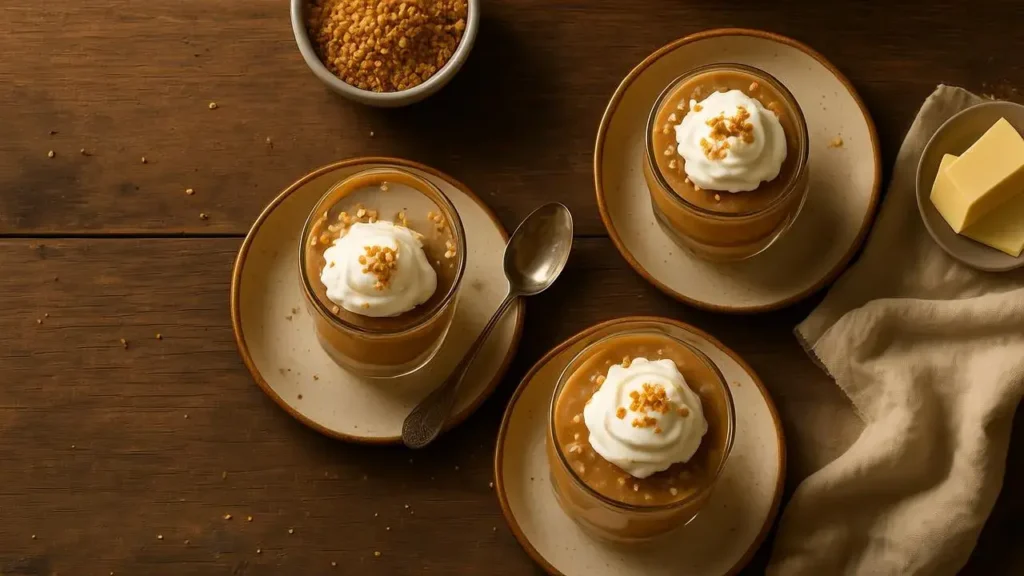
So, what exactly is butterscotch pudding? Well, it’s a sweet treat made from sugar, butter, and cream. The magic starts when you combine these ingredients to create that silky smooth consistency that we all love. Some might say that it’s similar to caramel, but there’s a vital difference: the method of cooking brown sugar. This pudding delivers a flavor experience that transports you back to childhood.
Butterscotch pudding can be enjoyed plain or dressed up with whipped cream, nuts, or even a drizzle of caramel. It’s not just a pudding; it’s a canvas for creativity! Many also serve it with a cookie crumble or fresh fruit for added texture and taste.
Ingredients for Butterscotch Pudding
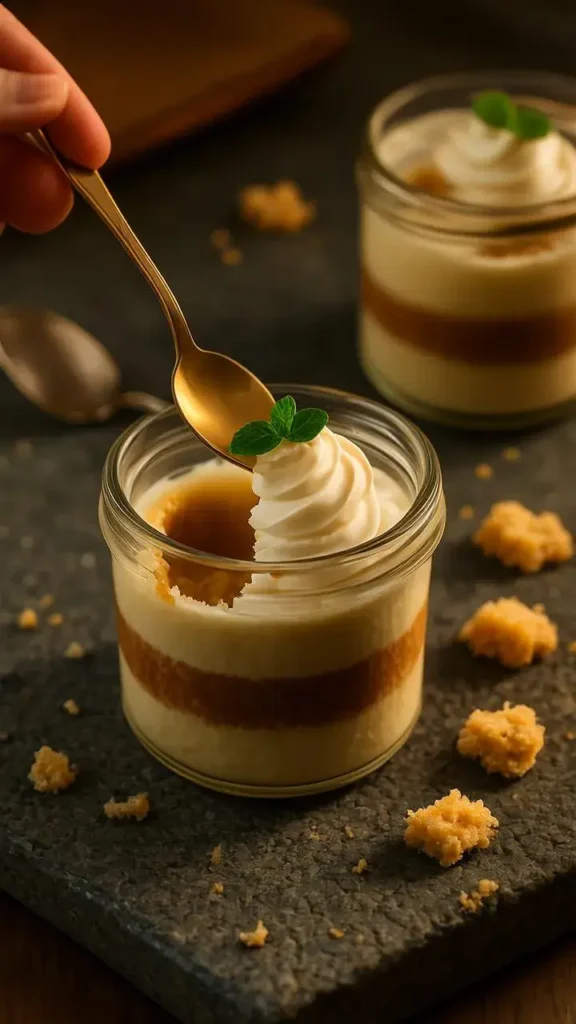
Gathering the right ingredients is essential to cooking any dish. Here’s what you’ll need for a classic butterscotch pudding:
- Brown Sugar: This is the star of the show. It adds that deep, rich flavor that defines butterscotch.
- Unsalted Butter: Use high-quality butter for the best taste.
- Milk: Whole milk is ideal for creaminess, but you can experiment with other types.
- Heavy Cream: Extra creaminess never hurt anyone!
- Cornstarch: This is your thickening agent.
- Salt: Just a pinch can enhance the flavors.
- Egg Yolks: They add richness and stability.
- Vanilla Extract: For that aromatic boost that ties it all together.
A Closer Look at the Ingredients
Brown Sugar: Packed with molasses, brown sugar contributes not only sweetness but also a unique flavor profile. You can use light or dark brown sugar, but dark offers a stronger taste.
Unsalted Butter: Using unsalted allows you to control the saltiness of your pudding. Butter is crucial in creating that delectable, smooth texture.
Milk and Heavy Cream: The combination of these gives the pudding its characteristic creaminess. Always look for dairy with no additives for the best results.
Cornstarch: It’s a key thickener that makes your pudding luxuriously creamy. Unlike flour, cornstarch won’t make the pudding cloudy.
Egg Yolks: These are essential for a custard-like texture. Be careful when adding them to the hot mixture; you wouldn’t want them to scramble.
Vanilla Extract: Always opt for pure vanilla extract rather than imitation. It ramps up the flavor profile tremendously.
The Cooking Process for Butterscotch Pudding
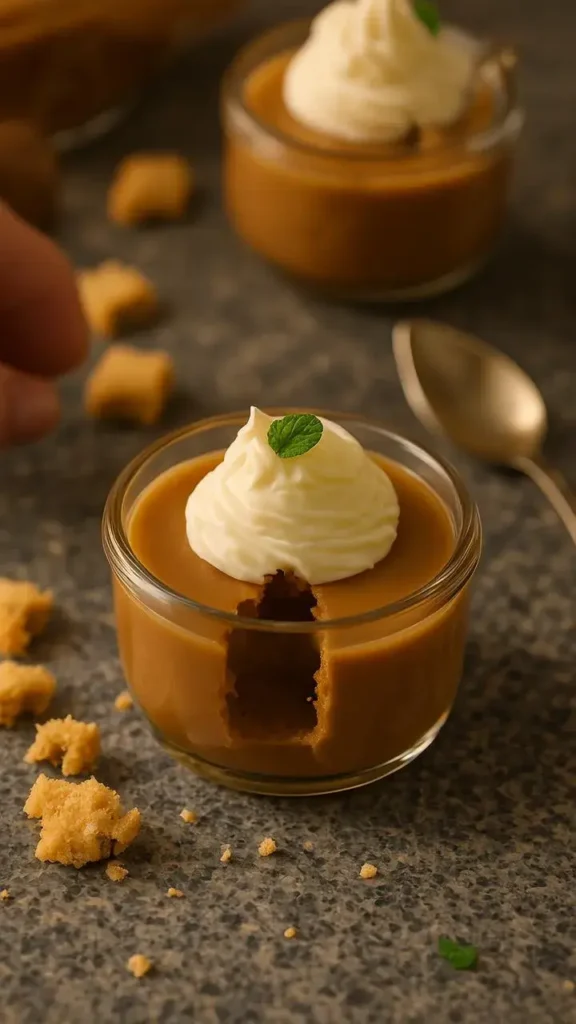
Making butterscotch pudding isn’t hard; it just takes some care and attention. Here’s a step-by-step breakdown of the process.
- Melt the Butter and Brown Sugar: Start by melting butter over medium heat in a saucepan. Add brown sugar and cook until the mixture bubbles, producing a delightful aroma.
- Whisk in Milk and Cream: Gradually pour in the milk and cream while whisking continuously. This prevents clumping and ensures a smooth mixture.
- Thicken the Mixture: In another bowl, combine cornstarch with a little milk until it’s a smooth paste. Whisk the cornstarch mix into the pot gradually.
- Beat the Egg Yolks: Lightly beat the egg yolks in a separate bowl. You’ll want to temper them by slowly adding a bit of the hot butterscotch mix into the yolks while whisking. This helps avoid scrambling.
- Combine All Ingredients: Pour the yolk mixture back into the saucepan and cook on low heat. Continue whisking until it thickens.
- Season with Vanilla and Salt: Once thickened, remove it from heat, then stir in vanilla extract and a pinch of salt.
- Chill and Serve: Pour the pudding into individual cups or a larger serving dish. Chill in the refrigerator for at least 2 hours. Serve with a dollop of whipped cream or a sprinkle of nuts if desired.
Tips for Perfect Butterscotch Pudding
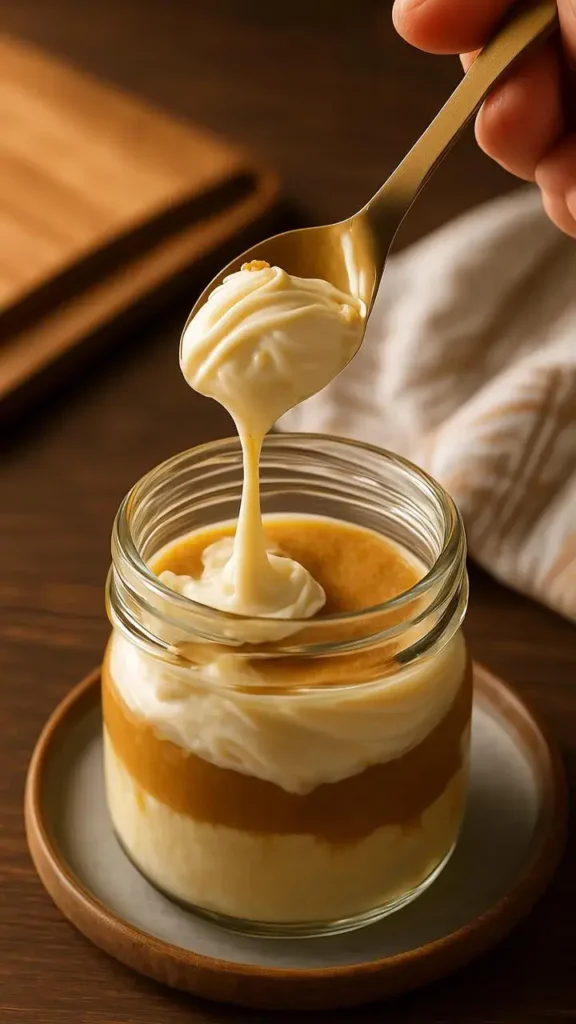
Making butterscotch pudding is an art form. Here are some tips to help you master it:
- Be Patient: Cooking over medium heat takes time. Rushing it can result in burnt sugar, which is not a flavor you wanna embrace.
- Use Fresh Ingredients: The fresher the eggs and dairy, the better the pudding will taste.
- Taste as You Go: Adjust levels of sugar or salt based on your preferences.
- Don’t Skip the Chill: Cooling solidifies the pudding, enhancing both the flavor and texture.
- Try Variations: Feel free to experiment with flavors! Add a splash of bourbon, maple syrup, or toasted coconut.
Storing Butterscotch Pudding
Like most desserts, butterscotch pudding can be stored for later enjoyment. Here’s how to do it right:
In the Refrigerator
- Duration: It lasts up to 3-5 days in an airtight container.
- Covering: Avoid a skin forming by wrapping the surface with plastic wrap. This helps keep it moist.
Freezing
Though freezing isn’t usually recommended due to texture changes, it’s doable.
- Duration: You can freeze it for up to 2 months.
- How-To: Place it in freezer-safe containers, leaving some space for expansion.
Nutritional Information
When indulging in butterscotch pudding, it’s wise to be aware of its nutritional content. Here’s a rough breakdown per serving (1/2 cup):
| Nutrient | Amount |
|---|---|
| Calories | 230 |
| Total Fat | 14g |
| Saturated Fat | 8g |
| Cholesterol | 120mg |
| Sodium | 150mg |
| Total Carbohydrates | 25g |
| Sugars | 15g |
| Protein | 4g |
Keep in mind, this can vary based on specific ingredients used.
Creative Serving Ideas for Butterscotch Pudding
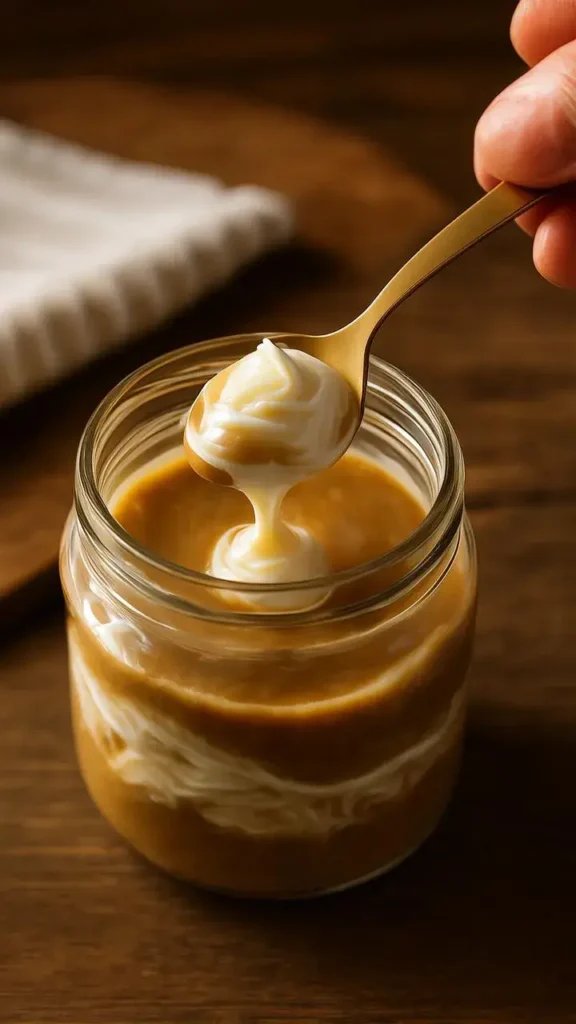
Why have butterscotch pudding on its own when you can build a whole dessert experience around it? Here are some fun serving suggestions that’ll impress your family and friends.
Toppings: Whipped cream, toffee bits, or crushed cookies take things to the next level.
Layered Desserts: Use butterscotch pudding as a layer in a trifle along with sponge cake and fruits.
Ice Cream Sundaes: Pour warm butterscotch pudding over vanilla ice cream for an indulgent treat.
Pudding Parfaits: Layer pudding with granola and fresh fruits. It’ll taste delicious and look fancy too!
Common Mistakes to Avoid
When making butterscotch pudding, it’s easy to run into a few hiccups. Here’s what to watch out for—so you don’t go wrong!
- Burning the Sugar: Monitor the heat carefully to prevent burning. A light golden color is what you want.
- Undercooking: Ensure you allow ample time for the pudding to thicken. This also adds to the flavor.
- Scrambled Eggs: Always temper your eggs before adding them to the hot mixture.
- Skipping the Chill: Allowing the pudding to set in the fridge is essential for that perfect texture; don’t rush this part!
Conclusion
Making butterscotch pudding at home is a delightful adventure. It combines simple ingredients and straightforward methods to create a dessert that delivers a comforting flavor profile. Knowing the right steps, along with a few tips and tricks, ensures success every time.
Whether you’re enjoying it solo or serving it at gatherings, butterscotch pudding is sure to be a crowd-pleaser. So why not give it a try? Create your own signature version and let it warm your heart!
